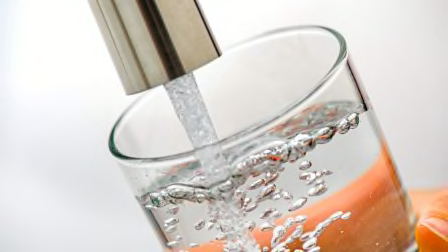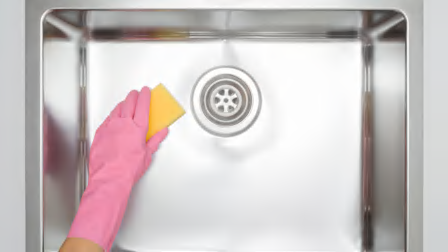Lead Is Common in Mississippi Drinking Water, Consumer Reports' Tests Find
But only one sample was above the EPA’s ‘action’ level

If you ask Mississippians about their tap water, many will say they are concerned about lead.
Those concerns echo anecdotal stories from friends, warnings from municipalities for pregnant women and young children not to drink the water, and national news stories from places like Flint, Mich.
An investigation by Consumer Reports and Mississippi Spotlight, a collaboration of the Clarion Ledger and other news organizations, found detectable levels of lead in all 149 municipal and well water samples from all corners of Mississippi, covering all counties in the state. Three of those cases were in Jackson. That said, just one sample, from Carroll County, near Greenwood, rose above the Environmental Protection Agency’s “action level.” See detailed results from CR’s tests (PDF).
See Consumer Reports’ recommendations for water filters that remove PFAS and learn how to get ‘forever chemicals’ out of your drinking water.
Testing by Consumer Reports and Mississippi Spotlight found that all three Jackson addresses had detectable lead levels, with all of them above 1 ppb but below the action level. Experts, including some involved with crafting the EPA regulations, often say that no level of detectable lead is safe and that the action level is not based on health outcomes.
There are other figures, too. The limit allowed by the Food and Drug Administration in bottled drinking water is 5 ppb, one-third of the EPA action level. None of the Jackson samples rose above that level, either. Two samples in the state, one in Quitman and one in Olive Branch, were higher than the 5 ppb mark but lower than the action level. The residents where those samples were taken did not respond to requests for comment, either.
Cecilia Bullock’s house had the highest amount of lead of any of the Jackson samples, at 4.76 ppb, just below the bottled water limit. Bullock says that she has often heard concern from friends and family about Jackson water but that she has trusted it and drank it, even through “boil water” notices.
“If it’s brown, I don’t drink it,” Bullock says. “If it’s yellow or brown, I don’t drink it, but if it’s clear, I am going to drink it. . . . I’ve had it looking like coffee or looking like tea, but if it’s clear, I’m drinking it.”
As for the lead, Bullock says it’s likely due to pipes inside or underneath her house.
“It could be the age of my house, built in 1931, which I’m sure has had a lot of pipe replacement, but not all of it,” Bullock says.
Roush-Elliott also tested her own house, which is on the Greenwood municipal water system. It returned no signs of lead.
“I’m not from Mississippi, but I’ve been here in Greenwood for a decade. Usually we have bad news, and on this front I think it’s good. I think people have a really positive relationship with their drinking water here,” Roush-Elliott says. “I would have a lot more doubts about private wells and how they’re maintained and things like that than I do about Greenwood’s water system. I’m sort of shocked to be saying that, but this is something that I feel like seems to be working well. I drink the water directly from the tap, and I enjoy it.”
In other areas, like in the state’s capital city, there is a far greater level of distrust.
Read more about CR's investigation into Mississippi's water quality.
• Dangerous PFAS Chemicals Add to Mississippi’s Water Woes
• Forever Chemicals’ in Drinking Water Are Worrying Mississippi Residents
• Mississippi’s Water Utilities Prepare for New Rules on PFAS in Drinking Water
Henifin has said one of his primary jobs is to build back trust among Jackson residents.
“It’s going to take a couple of years of consistent water at their taps every time they turn them on, no issues popping up anywhere, it’s going to take a long time to rebuild trust in the water,” Henifin said in an interview with the Clarion Ledger about the annual water quality report JXN Water released in July.
In a separate series of tests, performed by Clarion Ledger staff last year, seven out of 17 samples had detectable levels of lead, though none were above the action level and only one was above the 5 ppb bottled water limit.
Roush-Elliott says she has concerns about lead being detected by regulatory authorities in a timely manner, related to her experiences becoming a lead inspector. Delta Design Build Workshop is required to perform lead abatement procedures, but there were so few people in her area able to do the work that she decided to get trained on it herself.
“I have a lot more insight on that than most people. It also makes me realize how few people there are in this area. The fact that we can’t subcontract that out cost-effectively, that it was actually cheaper for me to go and get the training and certification, shows how little oversight there is,” she says. “We have a great relationship with our code enforcement office here in Greenwood, but we know that they are understaffed, and we know that we have significantly more code oversight than the vast majority of neighboring communities.”
This lack of oversight leaves her concerned that lead exposure may slip through the cracks in some places.
Editor’s Note: This investigation was conducted by Consumer Reports in partnership with Mississippi Spotlight, a collaboration between the Clarion Ledger and other news outlets in the state.




















